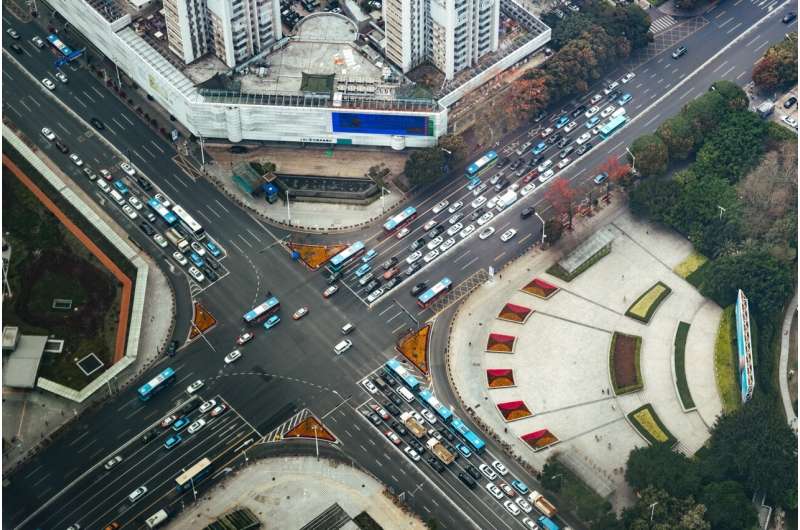This article has been reviewed according to Science X's editorial process and policies. Editors have highlighted the following attributes while ensuring the content's credibility:
fact-checked
proofread
The future of urban mobility in emerging economies

Urbanization presents major challenges not only for industrialized nations, but also for emerging countries, particularly when it comes to their future transport infrastructure. The "Emerging Urban Mobility" study carried out by Fraunhofer IAO looks at the demand for mobility and current challenges experienced in emerging economies and also identifies solutions for the future of urban mobility.
It provides an incentive for an increased international transfer of knowledge in the fields of transport and mobility planning in the future, which should be less influenced by the dominant perspective of industrialized countries in the West.
By 2050, more than two-thirds of the world's population will live in cities. While the process of urbanization is mostly complete in industrialized nations, it continues to gain momentum in many emerging and developing countries, posing major challenges for cities in these regions. High population density, dynamic economic growth, and social inequality have led to increased demands for mobility, in turn putting a strain on existing transport infrastructures and adversely affecting quality of life.
For this reason, the "Emerging Urban Mobility" study carried out by the Fraunhofer Institute for Industrial Engineering IAO focuses on the future of urban mobility in emerging economies and identifies possible solutions.
Looking confidently to the future of mobility
Based on the international survey of the urban population in the three focus countries Mexico, Morocco and Indonesia, the study comes to the conclusion that these countries are generally optimistic about the future of their mobility. Yet, even if the residents mostly assume that the mobility situation will meet their expectations in the future, the survey also highlights the challenges the cities will have to overcome.
"In all three countries, people's main concern is the safety of mobility. This shows us that the lack of road safety as well as the high risk of accidents present a serious problem that must be solved in the future," explains Patrick Ruess, the author of the study and head of the District Innovation Ecosystems team at Fraunhofer IAO.
People's ideas surrounding the future of mobility are largely derived from existing and well-known solutions. That's why the respondents continue to view cars as the most important mode of transport in the future. In Morocco and Mexico, cars are seen as having the greatest future potential, while in Indonesia they take second place. According to the "Friedrich Naumann Foundation for Freedom," the commissioner of the study, the results show that there could be significant demand for alternative fuels in these countries that are gradually moving towards more environmentally friendly mobility.
On the other hand, in view of the climate protection objectives, it is clear that cities in particular need to find methods of combining climate protection and private transport, as well as implementing effective large-scale public transport systems as a viable alternative.
Learning from smart solutions
In order to tackle the urban mobility challenges of today and tomorrow, four strategic action areas were identified in the course of the study: Digitalization and data availability, governance of urban mobility, accessible mobility and (spatially) efficient mobility. The best practices assessed in the study, such as the world's largest bus rapid transit system in Jakarta or the use of artificial intelligence for intelligent traffic control in Johannesburg, demonstrate the wide range of innovations that are already taking place in emerging economies and can be seen as the blueprint for the future of transport and mobility planning.
"The study shows us that there isn't a lack of knowledge or solutions, but rather a lack of implementation," states urban researcher Patrick Ruess. While the study's focus does not draw any universal conclusions for the heterogeneous group of emerging countries, it can be viewed primarily as a call for the international transfer of knowledge and technology to shape the future of urban mobility.
Provided by Fraunhofer-Institut für Arbeitswirtschaft und Organisation IAO




















